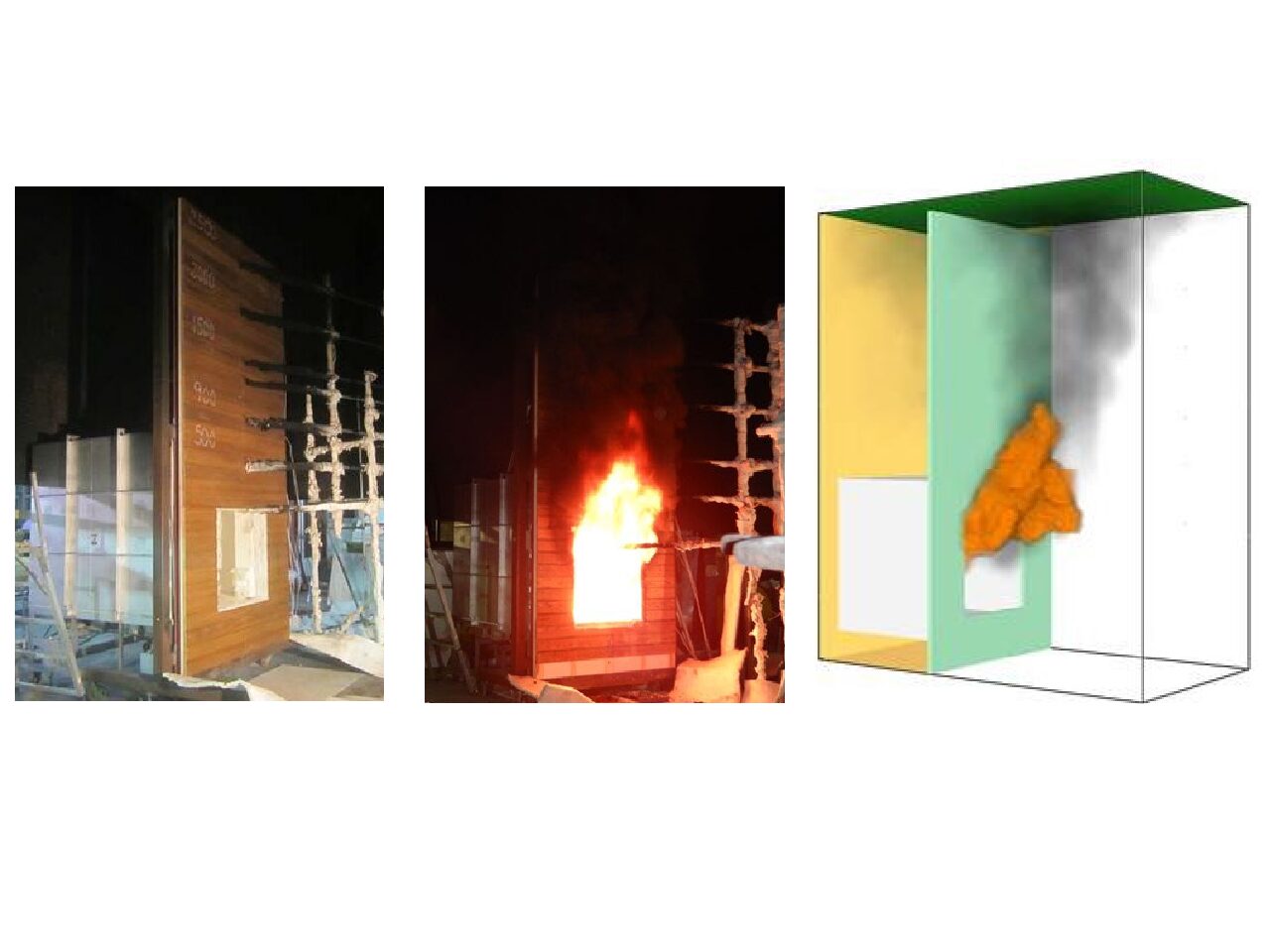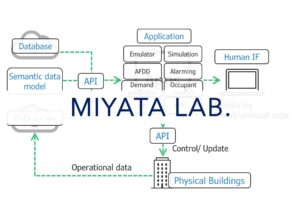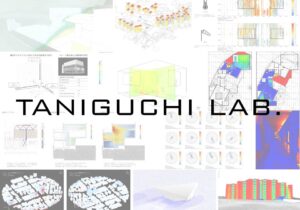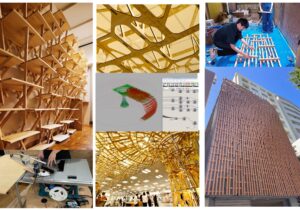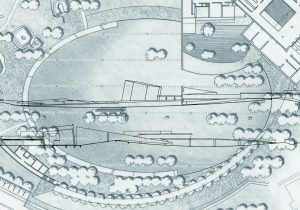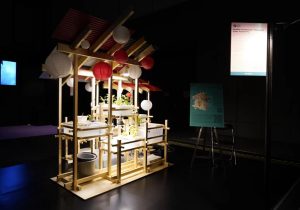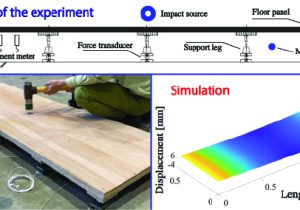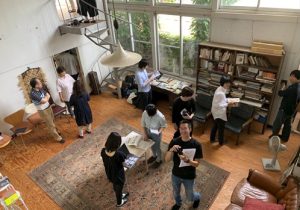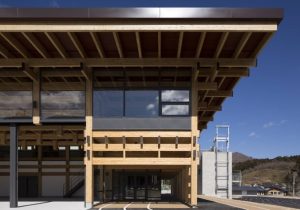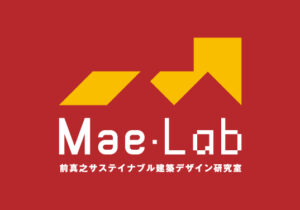前研究室 Mae Laboratory
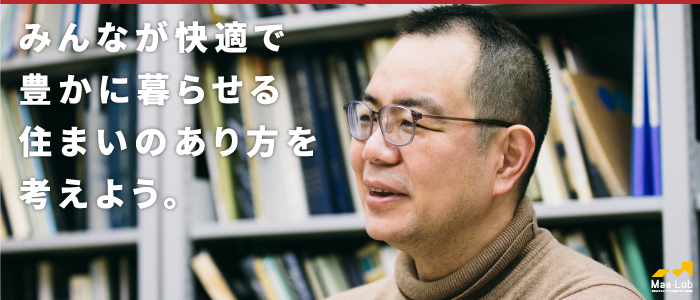
ビジョン
暖かく涼しい健康快適な暮らしをいつまでも最小のエネルギーコストで全ての人に届けるサステイナブル建築を目指し、将来の住宅に求められる技術・設計法を研究しています
前真之研究室では、快適な温熱環境を確保しつつ、太陽などの自然エネルギーだけで自立できる、日本の気候に合わせた未来のパッシブ住宅を研究しています。
住宅の性能は近年格段に向上し、かつては夢であったエコハウスの実現が十分可能な時代になっています。健康・快適な暮らしをゼロエネルギーで実現するエコハウスを日本中に実現し普及させるために最も重要となるのは、地域の気候、特に太陽エネルギーをしっかり分析して、最適な建物配置・形状・開口部配置・外皮性能を確保できる設計手法なのです。
実験棟での「実験」、実住宅での「実測」、数値計算による「シミュレーション」を通し、建築環境工学・建築物理の知識と技術をしっかりと理解してもらいながら、快適・ゼロエネな住宅の実現方法を考えていきます。
また建築家との協業による実設計の設計支援にも積極的に関わり、環境シミュレーションを活用した快適で省エネな住宅の実現に取り組んでいます。
太陽光発電によるゼロエネ住宅ZEHは、発電量が冬に少なくなるため、太陽熱による無暖房化が注目されています。開口部からの日射取得と躯体の蓄放熱による無暖房化は、年間を通したエネルギー自立の実現に不可欠です。冬の暖房に必要なエネルギーを徹底的に削減する「無暖房化」は、エネルギー自立住宅の実現に向けて極めて重要なテーマです。幸いにして、日本の太平洋側地域であれば、冬にも日射熱が豊富なので、開口部の性能を向上することができれば、無暖房化が十分に可能です。
太陽熱で無暖房を実現するには、昼間に開口部から太陽熱をたっぷり取り入れた上で、夕方・夜まで室温を維持するために、蓄熱・放熱により室温を安定させることが重要になります。特定の温度帯で融解・凝固する潜熱蓄熱体PCMを用いることで、従来のコンクリートなどの顕熱蓄熱に比べ、室温をより効果的に安定させることができます。前研では熱負荷計算やCFDによるシミュレーションとともに、屋上の方位が変更できる実大実験棟において、日射による室内温熱環境への影響を詳細に把握し、無暖房化の実現に取り組んでいます。
また、開口部日射取得に関わる環境調整行動をテーマに、居住者へのウェブアンケートを実施することで、暮らし方に応じたパッシブ行動の現状と可能性を把握していきます。
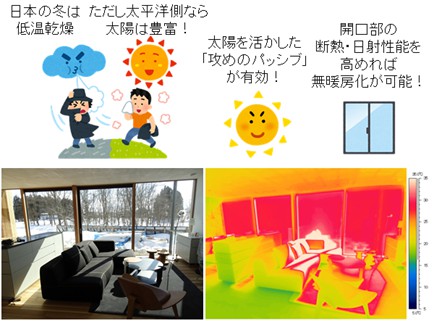
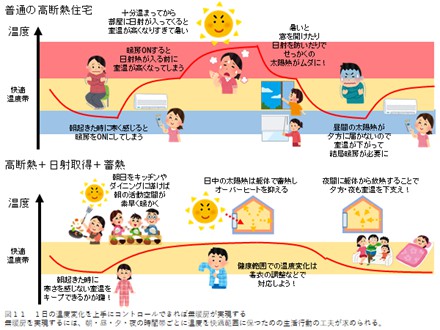
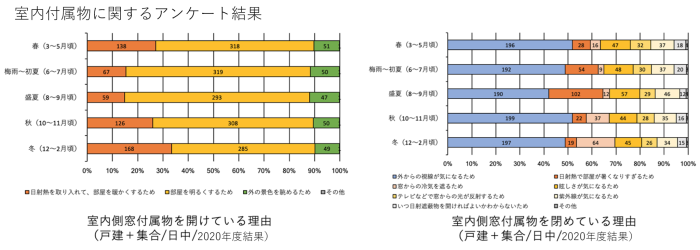
太陽エネルギーを電気と熱で最大限活用し、暖かく・涼しく・ゼロエネの住宅を完成させることを目指した研究を行っています。年間を通して住宅のゼロエネルギーを達成するためには、日照時間が限られる冬期において、太陽光発電とともに太陽熱の活用が欠かせません。本研究では、屋根空気集熱を活用した暖冷房・換気・給湯システムの開発を通し、ゼロエネルギー住宅の発展につながる研究を行っています。世界最先端の太陽熱活用型暖冷房換気給湯システムで、太陽熱と空気熱ヒートポンプにより、住宅で求められる熱と空気を1台で全て賄います。
家全体を健康・快適な温熱環境に保ちつつ、暖冷房に必要な消費エネルギー量を徹底的に削減するため、熱回路網計算と数値流体計算CFDを駆使した設計手法を構築しています。
システム性能の評価や実測で全国の住宅に伺う一方で、周辺環境・気候に配慮し、省エネルギーで快適な住宅を建てるにはどうしたらいいかという答えのないテーマについて考え、住宅業界最前線の現場に足を運び学びつつ提案を行える環境で研究を行っています。
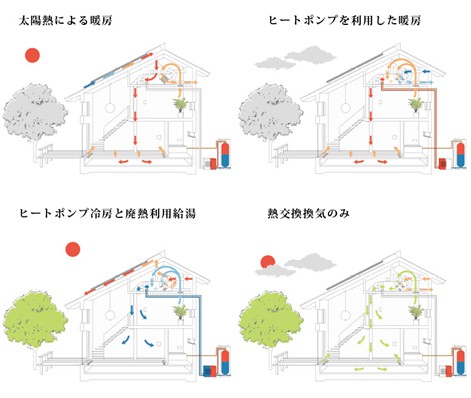
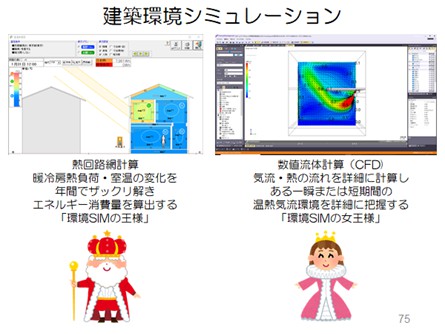
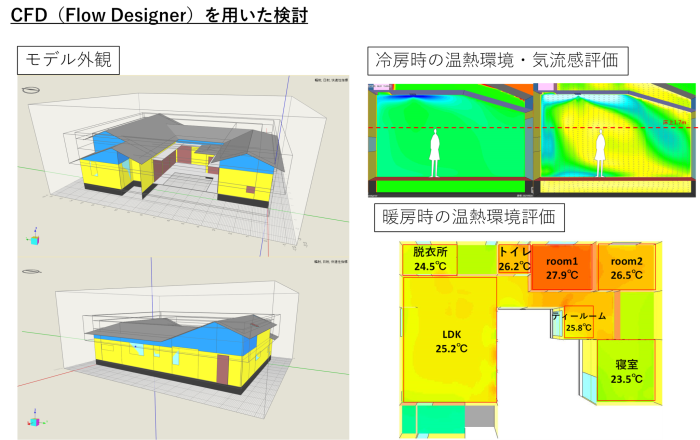
既存住宅の性能向上リフォームに関する研究(2017-2020)
前研究室の研究テーマの一つ「戸建リフォーム」では、既存の住宅ストックの性能向上等を目指し断熱リフォーム・暖房リフォームの普及促進を目指しています。具体的にはリフォーム事業者等へのヒアリング、シミュレーションを用いたリフォーム効果の可視化、施主を対象にしたウェブアンケート調査、断熱リフォーム等の効果を伝えるコンテンツの制作等を行っています。
世界的な省エネルギー化の要請に加えて、日本の新築住宅市場の縮小や、住宅内の寒暖差で起きるヒートショックなどの健康被害等、様々な社会的な課題に深く根ざした研究テーマであり、暮らし創造研究会をはじめとした様々な社会人の方々と一緒に取り組んでいく、非常にやりがいのある研究テーマです。
2021年度以降は、集合住宅の省エネリフォームについても、研究をはじめました。

詳細は研究室HP: http://maelab.arch.t.u-tokyo.ac.jp/
研究主宰者:前 真之

Vision
Find technology and design methods required for future housing,
aiming for sustainable architecture that delivers neither cold nor hot and healthy and comfortable living to all people at the lowest energy cost forever.
In Mae Masayuki Laboratory, we are researching future passive housing that matches the climate of Japan, which can be self-sustaining only with natural energy such as the solar energy while ensuring a comfortable thermal environment.
The performance of houses has improved dramatically in recent years, and it is now possible to realize the eco-house that was once a dream. The most important thing for realizing and popularizing eco-houses that realize healthy and comfortable living with zero energy is to thoroughly analyze the local climate, especially solar energy, and to optimize the building layout, shape, and insulation performance. This design method can ensure the arrangement of openings and the performance of the outer skin.
Through “experiment” in the experimental building, “actual measurement” in the actual house, and “simulation” by numerical calculation, while getting a solid understanding of the knowledge and technology of building environment engineering and building physics, a comfortable and zero-energy house can be achieved.
We are also actively involved in design support for actual designs in collaboration with architects and working to realize comfortable and energy-saving houses that utilize environmental simulations.
Zero-energy housing using solar power generation ZEH is attracting attention for its non-heating by solar heat because the amount of power generation decreases in winter. It is indispensable to realize energy independence throughout the year by acquiring solar radiation from the opening and eliminating heat by storing and radiating heat from the frame. “Without heating”, which drastically reduces the energy required for heating in winter, is an extremely important theme for the realization of energy-independent housing. Fortunately, in the Pacific region of Japan, there is abundant solar heat even in winter, so if the performance of the opening can be improved, it is possible to eliminate heating.
To realize no heating by solar heat, it is important to take in plenty of solar heat from the openings in the daytime and stabilize the room temperature by heat storage and heat dissipation to maintain the room temperature until evening and night. By using the latent heat storage material PCM that melts and solidifies in a specific temperature range, the room temperature can be stabilized more effectively than the conventional sensible heat storage such as concrete. In Mae Laboratory, by using the heat load calculation and CFD simulation, we are working on the realization of non-heating by grasping in detail the effect of solar radiation on the indoor thermal environment in the full-scale experimental building where the rooftop experiment room whose orientation can be changed.
In addition, we are now pretend to conduct a web questionnaire to residents on the theme of environmental adjustment behavior related to the acquisition of solar radiation at the opening to understand the current situation and possibility of passive behavior according to the way of living.



We are conducting research aimed at completing a neither cold nor hot and zero-energy house by maximizing the use of solar energy with electricity and heat. To achieve zero energy in homes throughout the year, it is essential to utilize solar heat as well as solar power generation in winter when the daylight hours are limited. In this research, we are conducting research that will lead to the development of zero-energy housing through the development of heating / cooling / ventilation / hot water supply systems that utilize roof air heat collection. It is the world’s most advanced solar heat utilization type heating / cooling ventilation hot water supply system, and it supplies all the heat and air required in a house by solar heat and heat pump.
To thoroughly reduce the amount of energy consumed for heating and cooling while maintaining a healthy and comfortable thermal environment for the entire house, we are making a design method that makes full use of thermal circuit network calculation and computational fluid dynamics (CFD).
While visiting houses nationwide for system performance evaluation and actual measurement, we thought about the unanswered theme of how to build a comfortable house with energy saving, considering the surrounding environment and climate, and the front-line site of the housing industry. We are conducting research in an environment where we can make proposals while visiting and studying.



Research on performance improvement for reform of existing houses (2017-2020)
One of the research themes of MAE laboratory, “Detached house remodeling,” aims to promote the spread of heat insulation remodeling and heating remodeling with the aim of improving the performance of existing housing stock. Specifically, we conduct interviews with reform companies, visualize the remodeling effect using simulations, conduct web questionnaire surveys for owners, and create content that conveys the effects of heat insulation reform.
In addition to the global demand for energy conservation, this research theme is deeply rooted in various social issues such as the shrinking of the new housing market in Japan and health hazards such as heat shocks caused by temperature differences in houses. It is a very rewarding research theme to work with various members of society, including the Living Creation Study Group.
After 2021, we started research on energy-saving reform of apartment houses.

For more detail: http://maelab.arch.t.u-tokyo.ac.jp/
Principal Investigator: Masayuki Mae
